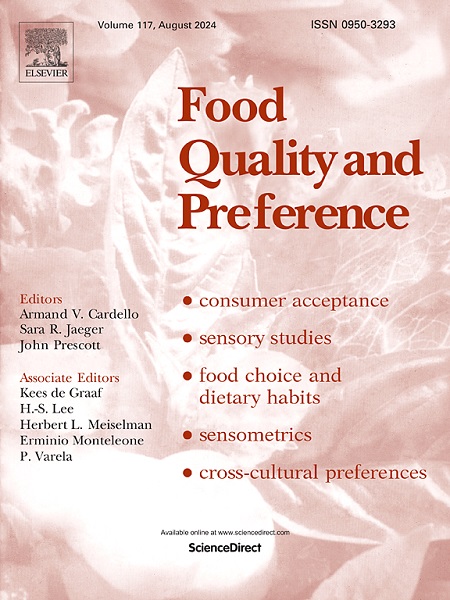The consumer journey: A new methodology to study the effects of store and product information on consumers’ responses to sustainable foods and clothing fabrics
IF 4.9
1区 农林科学
Q1 FOOD SCIENCE & TECHNOLOGY
引用次数: 0
Abstract
Background
Consumer experiences are not only based on how a food tastes or clothing fabric feels but also on factors such as the store of purchase and product information.
Method
Participants were taken on virtual consumer journeys to monitor their reactions to sustainable foods or clothing fabrics. After a virtual ‘purchase’, an ingredient/material information phase followed, whereafter foods were tasted or T-shirt sleeves were felt.
Results
Heart rate and skin conductance were significantly affected by the type of food (p < 0.001), while the type of fabric and information significantly influenced facial expressions (p < 0.05). Sustainable supermarket assortment foods triggered higher skin conductance and more negatively valenced facial expressions than those from the regular assortment (p < 0.05). Reformulated muffin, yoghurt drink, and Bolognese sauce triggered higher skin conductance, while this was lower for reformulated cookies and lentil burgers. Facial expressions were more positive for reformulated cookies and more negative for reformulated lentil burgers (p < 0.05). Fabric from reused clothing triggered negative facial expressions and increased heart rate and skin conductance (p < 0.01), especially in combination with an upscale store. Fabrics from nettles and polylactic acid were similar to reactions to the familiar benchmark (organic cotton), namely lowered heart rate and skin conductance, and positive facial expressions.
Conclusion
This methodology identified opportunities for the development of sustainable foods and fabrics that are acceptable to consumers and could therefore be a valuable tool in the development of sustainable products that are successful in the marketplace.
求助全文
约1分钟内获得全文
求助全文
来源期刊

Food Quality and Preference
工程技术-食品科技
CiteScore
10.40
自引率
15.10%
发文量
263
审稿时长
38 days
期刊介绍:
Food Quality and Preference is a journal devoted to sensory, consumer and behavioural research in food and non-food products. It publishes original research, critical reviews, and short communications in sensory and consumer science, and sensometrics. In addition, the journal publishes special invited issues on important timely topics and from relevant conferences. These are aimed at bridging the gap between research and application, bringing together authors and readers in consumer and market research, sensory science, sensometrics and sensory evaluation, nutrition and food choice, as well as food research, product development and sensory quality assurance. Submissions to Food Quality and Preference are limited to papers that include some form of human measurement; papers that are limited to physical/chemical measures or the routine application of sensory, consumer or econometric analysis will not be considered unless they specifically make a novel scientific contribution in line with the journal''s coverage as outlined below.
 求助内容:
求助内容: 应助结果提醒方式:
应助结果提醒方式:


